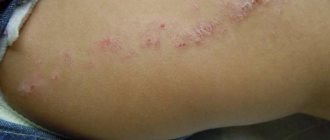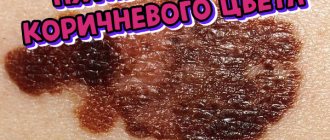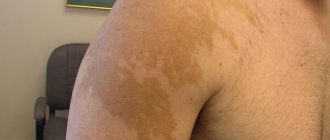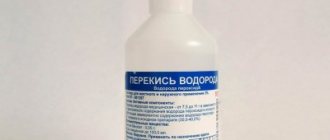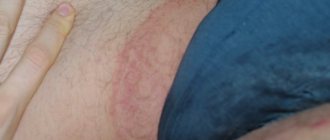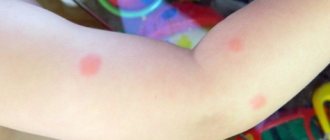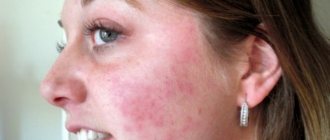A birthmark is a mark on the skin that occurs at birth and may make itself felt a little later. It comes out in any part of the skin. There are two types of spots: regular and vascular.
A vascular spot is a collection of small blood vessels. This spot is red. There is no need to treat it. A common birthmark has a smooth brown surface.
The birth of the baby you have long dreamed of is happiness for parents. But often even the first glance at their baby can cause fear in parents. All this can be caused by various birthmarks and formations; they appear on the skin of babies.
It is believed that they appear due to some disturbance during the prenatal period.
Another name for birthmarks in newborns is hemangiomas. Doctors identify three categories of babies who are more prone to the appearance of birthmarks in newborns than others.
These include:
- female children;
- babies who have very light, white skin;
- babies who were born prematurely.
What is a birthmark?
When pigmented formations appear, the significance in a newborn depends on their shape, type and location. In most cases, infants have nevi and hemangiomas, which are formations on the skin that appear due to increased production of the coloring pigment melonin or the accumulation of blood vessels.
Nevi and hemangiomas have different shapes and sizes; most often they form in the baby during prenatal development. New growths on the skin can be flat, convex, smooth, dark or light. The photo can be seen below.
Melanocytes, special cells of the dermis containing the coloring pigment melanin, are responsible for the color saturation of nevi. The more melanin they contain, the darker the color of the tumor.
Main risk group:
- a girl is more likely to develop hemangioma than a boy;
- premature babies;
- babies with fair skin type.
Doctors believe that such babies have a higher risk of developing skin nevi and hemangiomas than other children.
Why do they appear
Several centuries ago, it was believed that spots were formed in children whose mothers loved to pet cats and dogs. Today, scientists cannot name the exact reasons for the appearance of birthmarks. But there are a number of factors that increase the risk of nevi and other defects.
Among them are the following:
- hereditary predisposition - if the parents have education, then most likely the children will have it too;
- hormonal disruptions in the functioning of the body in the expectant mother. For the same reason, age spots appear on the body of pregnant women;
- while the child is in the womb, there is a disruption in the production of melanin;
- while pregnant, the woman took a course of medications (usually hormonal pills);
- the appearance of defects in infants is influenced by poor ecology;
- diseases of the genitourinary system.
Interesting! Astrologers believe that the spots indicate that they carry a fateful meaning for the newborn. For example, a defect on the forehead indicates hard work, and on the stomach - a rich life.
Causes of stains
The reasons for the appearance of pigmented formations in newborns are most often associated with excessive accumulation of melanin, damage to the blood veins, vessels and capillaries. The final mechanism of formation of nevi and hemangiomas in infants has not been established.
The following provoking factors are identified:
- Hormonal imbalances in the mother's body.
- Fetal hypoxia during pregnancy or at the time of birth.
- The baby is born prematurely.
- Multiple pregnancy.
- Infectious diseases in the mother during pregnancy.
A birthmark in a newborn usually does not cause him any concern; it does not itch, does not itch and only requires constant monitoring. They are considered benign and the risk of their degeneration into malignant is minimal; they disappear on their own upon reaching 9-10 years of age.
Types of birthmarks
All pigmented neoplasms on the face or body of a child are divided into 2 main groups - hemangiomas and nevi. In the first case, we are talking about the accumulation of blood capillaries, which give the spot a reddish tint. Nevi are formed on the basis of melanin, so they can have a different color - from light golden to black.
Hemangiomas are divided into types:
- flat - considered the most common, characterized by a regular shape and smooth edges;
- star-shaped - they look like red dots with capillaries coming from them, disappear on their own after 1.5-2 years;
- capillary - look like wine-colored spots located in the deep layers of the epidermis;
- cavernous - when palpating such a formation, you can feel the pulsation of blood;
- strawberry (berry) - characterized by a bright scarlet hue and deformed edges.
A birthmark on the head or body of a child does not require special treatment and does not cause discomfort for the newborn. Damage or tearing off of a formation, as well as a sudden change in its structure, shape or size in newborns on the forehead, is considered a cause for alarm. In such cases, you should never hesitate to visit a doctor.
White birthmarks
There is a separate type - white birthmarks, which are also called anemic. They do not pose a health hazard, do not tend to increase in size, but they do not look aesthetically pleasing and rarely disappear on their own.
In most cases, a white birthmark in a child is formed due to insufficient production of melanin by epidermal cells. It can have different shapes and sizes.
The main reasons for the appearance:
- Vitiligo is a common dermatological disease.
- Prolonged exposure of the child to direct sunlight.
- Heredity.
- Disorders of melanin synthesis during intrauterine development.
- Metabolism failures.
- Deficiency of vitamins and microelements in the layers of the epidermis.
Most often, white pigmented formations are localized in the area of the knees, palms, back, and fingers. When you press on such spots, the skin around them turns pink or red, but they do not change their pale shade.
White neoplasms are completely safe for a child. But parents should be careful to ensure that the newborn does not scratch or tear it off.
When moles are dangerous
When moles appear in a newborn, it is necessary to pay attention and regularly visit a dermatologist. The doctor will use a dermatoscope to examine the formation, determine its nature and the presence of cancer cells. When bathing or changing your baby, you should carefully examine new spots or changes in existing ones. Birthmarks in a baby are not dangerous if there are no alarming symptoms. These signs include: intense increase in size and change in color, localized on the face, clear boundaries have disappeared, blood or clear liquid is released. It is necessary to visit the office of a pediatric dermatologist if the nevus in the area that is swollen and irritated is covered with hair. A cause for concern is the appearance of a bumpy surface or compaction that begins to peel off.
Birthmark in hair
A birthmark on the scalp, also called Jadassohn's seborrheic nevus, most often occurs as a result of damage to the sebaceous glands. The pigment formation has a yellow or brown tint, most often located under the child’s hair, in the temples and neck.
In the area of the mole, the baby's hair falls out and does not grow. Jadassohn's seborrheic disease has a tendency to degenerate into an oncological neoplasm, so doctors recommend removing such formations.
Diagnostics
For differential diagnosis, the following types of studies are used:
- Examination with a dermatoscope, which allows you to see any pathology on the skin with multiple magnification.
- Study of pigment formations with a Wood's lamp, which uses weak ultraviolet radiation. Melanin absorbs ultraviolet light well, so areas with a high pigment content appear darker, while areas with less pigment appear lighter.
- In doubtful cases, computer diagnostics of moles is carried out using a videodermoscope.
- Tissue biopsy with histological examination. Finding cells with signs of proliferative growth is an indication for consultation with an oncologist.
We suggest you familiarize yourself with Antifungal agents for toenails and fingernails. Effective and inexpensive, prices, reviews
Should hemangiomas be treated?
Many pediatricians and dermatologists believe that pigmented tumors are absolutely harmless to the health of the child. Their appearance is not accompanied by itching, burning, pain or other unpleasant sensations.
But parents should carefully monitor such swelling. The child should not be exposed to direct sunlight for a long time and should not scratch or injure the mole. Also, parents should not use alternative medicine to remove pigment formation on their own.
If the tumor changes in color or size, begins to crack, peel off, bleed, or is filled with liquid or purulent contents, you should definitely seek medical help to remove it.
Effective treatments:
- drug therapy - injections of drugs into the cavity of the affected area of the skin, as a result of which its cells gradually die;
- surgical intervention - surgical excision is used only for large tumors and is accompanied by pain and a long healing process;
- laser excision is one of the most popular methods for removing pigment formations in newborns, which does not cause pain and does not leave rough scars;
- radio wave method - removal of pigmented tumors is carried out using radio waves, the technology is considered highly effective and low-traumatic;
- cryodestruction - involves the use of liquid nitrogen, with which the hemangioma is frozen and dies off on its own after a few days.
Birthmarks in newborns should not cause concern to parents, since they do not pose any threat to the health and life of the baby. In most cases, pigmented neoplasms disappear on their own, without any treatment, several years after birth.
When is treatment required?
If a brown nevus appears in a newborn, there is no need to worry and conduct a comprehensive medical examination. It is necessary to monitor the size, shape, and surface of the birthmark. In the absence of intense enlargement, redness or darkening, or bleeding, it is not advisable to remove the spot. If there have been cases of melanoma along the family line, parents must observe:
- Avoid mechanical damage to the nevus.
- Regularly visit a pediatrician, who will examine the formation independently or refer you to an appointment with a pediatric dermatologist.
- Minimize the baby's exposure to direct sunlight. When visiting the beach, apply protective creams to the child’s skin and put a hat on the head.
If a newborn's birthmark rubs, rubs, or the child accidentally tears it off with his hand, the formation must be removed. Without surgical intervention, the risk of the spot transforming into a malignant tumor increases. Hanging moles, which become inflamed more often than others, must be removed. When scheduling removal, parents follow the dermatologist's instructions.
Medicine offers several safe ways to remove growths on a child’s skin:
- Laser removal. The procedure is performed under general or local anesthesia. The choice of anesthesia depends on the size of the spot.
- The cryodestruction method is indicated for older children, since the procedure is painful.
- Removal with a scalpel. A surgical method for excision of large formations, hemangiomas. The operation requires general anesthesia.
The development of melanoma in infants is a rare occurrence, but visiting a doctor should not be neglected. This helps control the development of nevus and detect malignant cells.
After the birth of a long-awaited baby, many parents are faced with such an unpleasant phenomenon as birthmarks in newborns. They are called nevi or hemangiomas and can be located on the skin of the face and body, as well as the baby's scalp.
Despite the fact that such pigmented formations are quite common in babies, they cause concern for his relatives. Should I be worried or do they pose no danger to the health of the newborn?


